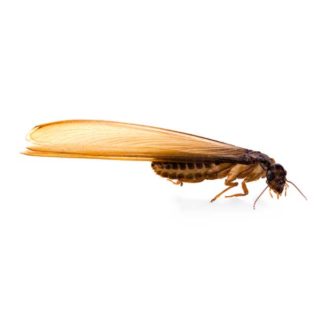Identifying Asian Termites in Florida
The Asian termite is an invasive subterranean termite that has established itself in Florida. It has now become the second most destructive termite in Florida, making early identification and prevention of an infestation crucial. These small pests dig an intricate network of underground tunnels and above-ground mud tubes in their search for sustenance. While they prefer feasting on trees, these tenacious pests are also known for infiltrating and damaging homes and businesses. Female Asian termites can lay up to 1,000 eggs a day, resulting in colossal colonies numbering well over a million destructive termites and posing a substantial threat to wooden structures in the area.
Where in Florida Do Asian Termites Live?
As their name implies, the Asian termite is native to southeast Asia but has slowly spread to other areas around the world with warm and humid climates, including Florida. Asian termites prefer living in the soil, close to moisture and food sources but these pests don’t limit themselves to decaying wood like some termites. They use their strong mandibles to decimate any wood that has come in contact with the soil. These expert architects build vast networks of tunnels, housing millions of termites that work tirelessly, damaging wooden structures from the inside out. To reach food sources, Asian termites will construct mud tubes above ground, allowing them to move along the surface without drying out.
How Common Are Asian Termites in Florida?
Asian termites have become increasingly common in Florida over the past few decades. Their prevalence is exceptionally high in urban areas where they can easily find food and moisture. Florida’s warm, humid climate provides an ideal environment for these termites to thrive and expand their colonies. As a result, infestations have been reported more frequently in residential and commercial properties.
Human activities, such as transporting infested wood and soil, facilitate the spread of Asian termites. Property owners must be vigilant and take preventative measures to protect their homes and businesses from termite infestations.
Are Asian Termites Dangerous?
The introduction of Asian termites into Florida’s ecosystem has resulted in significant challenges for homeowners. They have quickly become the second most destructive termite in the state and pose a substantial threat to any wooden structure they find. Asian termites are known to eat and weaken important structural beams of a house, causing thousands of dollars of damage to your home if left untreated. A termite infestation can be hard to spot due to their subterranean nature. The best time to spot termites is during the spring when swarms of alates leave the colony, searching for the perfect place to establish a new colony. If you see signs of termites, contact your local pest control company immediately. Don’t let these pests destroy your home, Contact Bug Out today to learn about our termite extermination services!
FAQs
What Is The Most Common Termite in Florida?
The most common termite in Florida is the eastern subterranean termite. However, other species, such as the Formosan and Asian subterranean termites, are also prevalent and can cause significant damage if not controlled.
How Harmful Are Termites in Florida?
Termites in Florida are a serious concern due to the state’s warm and humid climate, which provides an ideal environment for these pests. Infestations can lead to extensive structural damage, resulting in costly repairs and potential safety hazards. Regular inspections and preventative measures are crucial to protect properties from termite damage.
Need help with Asian Termite control?
Leave your information below and we’ll be in touch with a FREE quote!
"*" indicates required fields
*During normal business hours. After hours calls will be returned the next business day.


